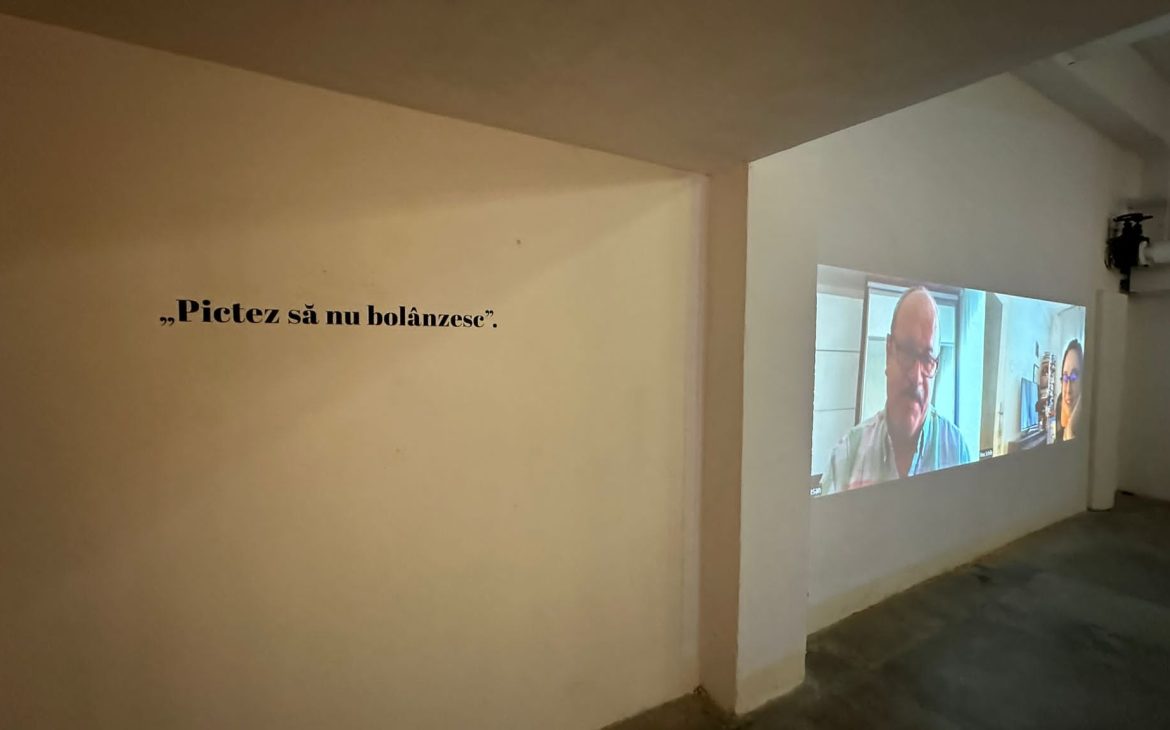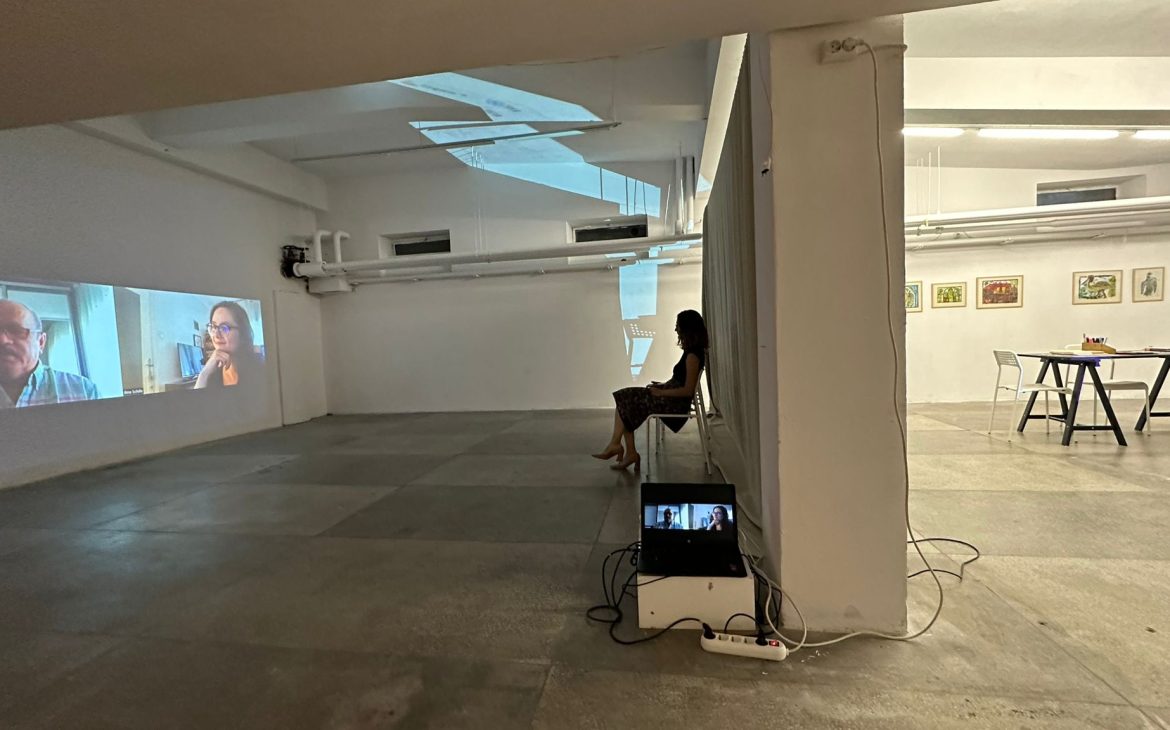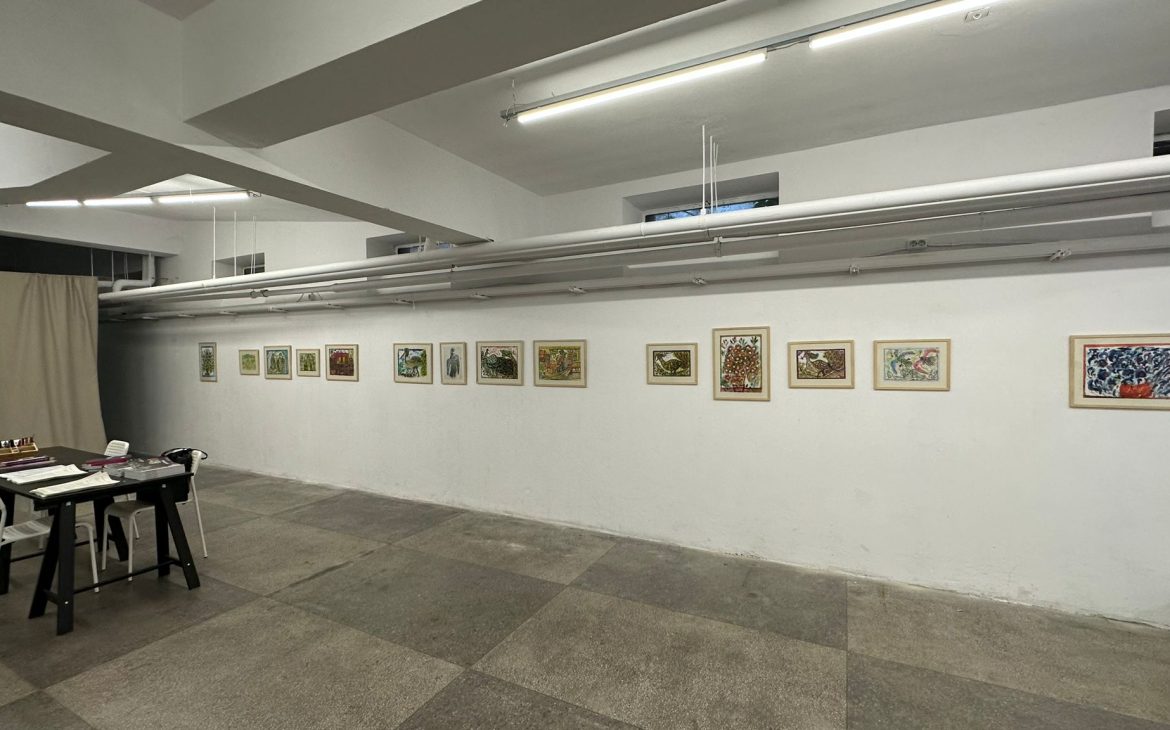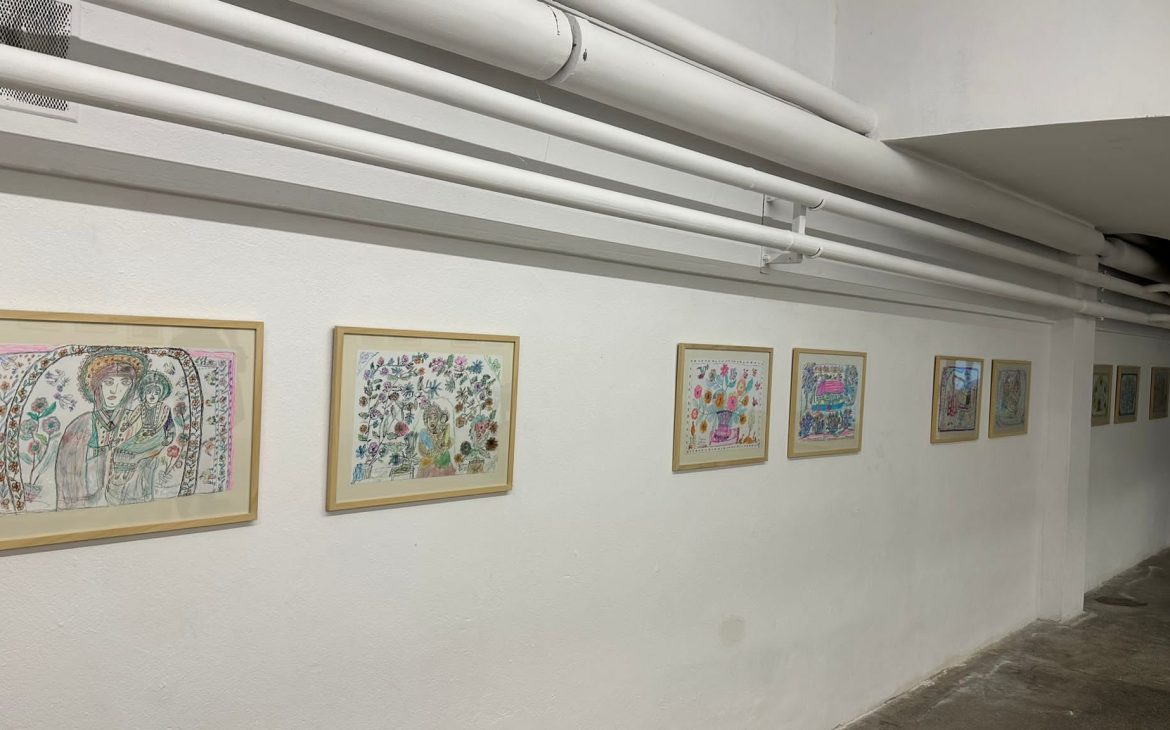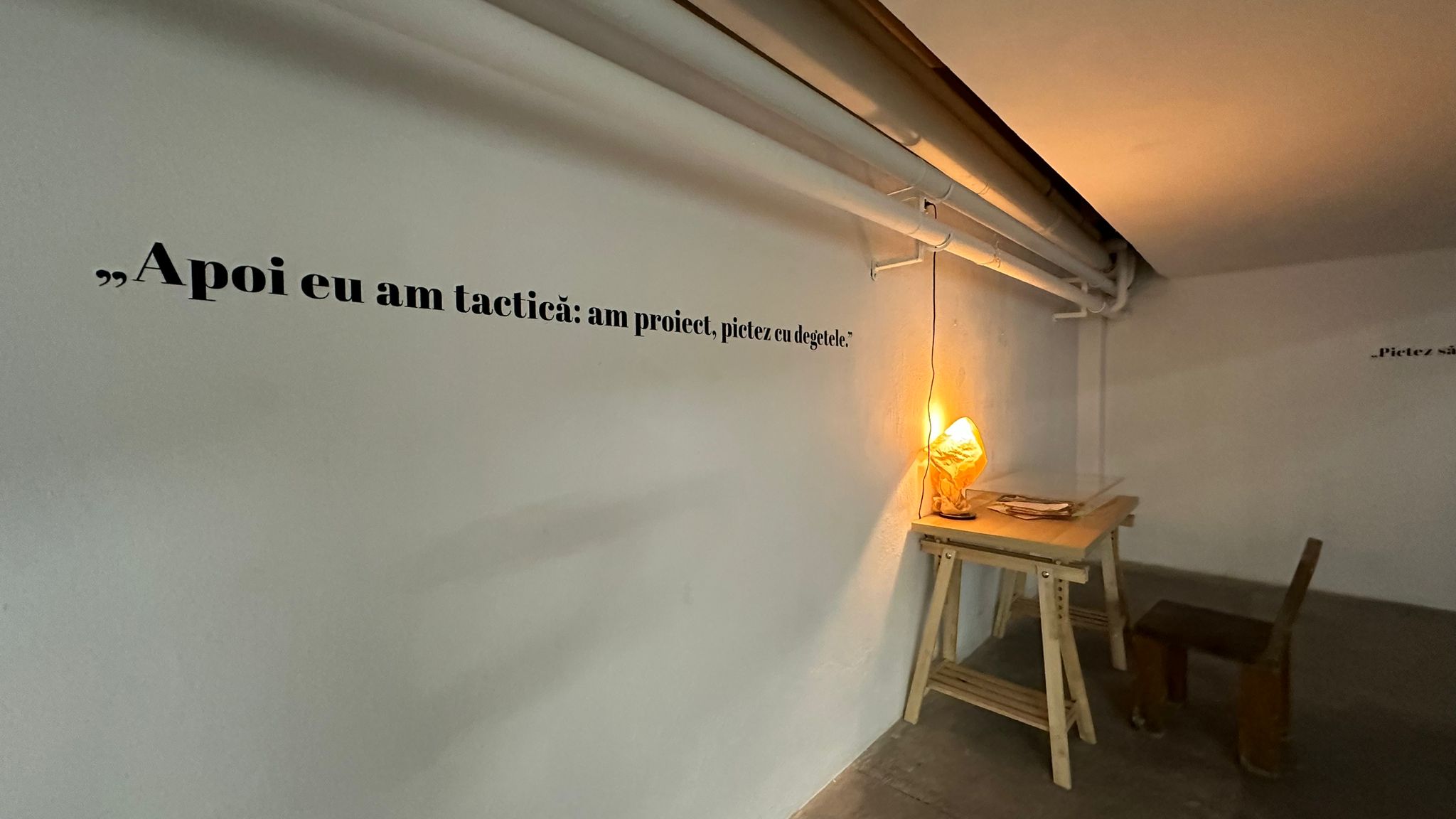The exhibition “LOST SIGNAL. Recoveries. The Case of Eugenia Mureșan” investigates a story like many others that appear from time to time in the village, a specific thread among the histories of those who make art without wanting to or without knowing it, amazing with the power of a native, untamed, unpolished, free talent.
Endowed with grace, creativity and purpose amid communities, anonymous authors tinker with drawings, paintings, sculptures or installations, often without giving them a name from the series of those gathered under the generous title of Art. The “Lost Signal” exhibition shines the light on one of these cases: Eugenia Mureșan, a woman from the Ceanu Mare commune near Cluj, coincidentally (or maybe not!) the mother of the artist Ioan Aurel Mureșan.
LOST SIGNAL. Where the cell phone loses signal.
With the coverage power of the new internet networks, it’s hard to lose the signal on a trip to the mountains. However, some communities are cut off from the world where the signal does not work daily. Or maybe it never worked—life changes and its most important rules, with just a dash on the phone. The universe slows down just enough to give people time to get to know each other better and put their trust in those close to home.
Family ties are closer, and they share the worries and joys of each day with their neighbors. Only death can bring storm clouds into a space with rules since the world. When one dies, his family begins to decline. A delicate balance is shaken, and the new reality is difficult to rebuild, especially since the endings are often in the last age of life when everything is grayer and heavier.
Fairy tales, imaginings, and fragments of reality slide into each other, just like in the paintings on display. For Eugenia Mureșan, born in Ceanu Mare, the loss of her husband brought loneliness. She found solace in what would be dear to her all her life: painting, a detailed handiwork, thought first to drive away the ugly… Eugenia lived in order, raised children, maintained a house, and cared for herself for animals, gardens, and people. It wasn’t until she was 80 that she could follow her passion.
Of course, she always had a nature, always tempted by feminine flirtations and with a penchant for arts and books, assuring everyone that she was endowed with a special sensitivity. She painted for hours by the window, on the kitchen table, waiting for the visit of her two sons, Emil and Ioan. Ioan, Nelu, as he is called in the family, is a great painter and a professor at the University in Cluj, so it would be good to show him what other drawings and paintings he has done. Here, he painted Maica Precista, who is beautiful like her. There, Nelu and Emil. She put a boyar’s hat on Nelu and dressed Emil in rich clothes.
They both went to the city as young people went to school and did well. The boys always brought him colored pencils or crayons. Nelu was careful not to lack drawing paper and suitable materials. Eugenia’s colors are velvety to the touch, a sign that someone carefully selected some professional oil pastels for her. The pigments are right, and she has felt to choose them with skill and to place them beautifully, as in bark to put on the wall, always with a frame all around […].
The exhibition can be visited until October 15, 2023, on Saturdays and Sundays between 2-6 p.m. Entry is free.
Eugenia Mureșan was born in Iacobeni, a hamlet in Ceanu Mare, a commune on some hills near Cluj-Napoca. It is possible that there was no photographer at her wedding with Mihai, so the few archival images are from the last decade of her life. She never really left Ceanu Mare, although she made several trips to Cluj on business. After the death of her husband, she took up painting, encouraged by her two sons. She remains in the memory of her loved ones as a unique presence with an extraordinary artistic sensibility. She left around 200 drawings made in pen, watercolor, colored pencil, and oil pastel.
The Triade Foundation, at the initiative of the curator Sorina Jecza, published an album with images of her works, which she got to hold in her hand. In the countryside, such talents are not exactly a rarity. Few families in Romania manage to preserve the material heritage that manifests itself in the villages, in cases such as that of Eugenia Mureșan, Picu Pătruț, Savu Moga, Matei Țimforea, Gheorghe Poenaru. His two sons, Emil and Ioan Aurel Mureșan, took care of this approach, with the support of Sorina Jecza, president of the Triade Foundation, at whose suggestion Eugenia Mureșan will have her first personal exhibition at MNȚRplusC, in the National Museum of Romanian peasant.
Ioan Aurel Mureșan was born on June 4, 1956, in Ceanu Mare, a village between Turda and Cluj, and is the son of Eugenia and Mihai Mureșan. The subjective topography of the place remembers the hills of his early childhood, the natural space, and the library where he discovered the books. There, in his adolescence, he found the Decameron, and it was also there that Oblomov had intrigued him, the character incapable of making any decision to translate into action.
He remembers his father, Mihai, as a closed man, often harsh, whose short speech gave way to affection. Mother Eugenia, however, intuits that her reading son is a “gentleman” and protects his cultural inclinations, which he will cultivate when he leaves Ceanu Mare to study. Since 1990, he has been invited to occupy the University of Art in Cluj professor position. Since then, his significant intellectual accumulations have come to fruition in more than 30 student promotions that have benefited from his culture and ability to make the history of painting alive.
The exhibition Recoveries: The Case of Eugenia Mureșan is part of the extended project LOST SIGNAL: Recoveries and interventions, co-financed by AFCN, which questions stereotypes related to rurality about urbanity and ageism within the MNTRplusC program, space for contemporary art and social dialogue, located in the basement of the National Museum of the Romanian Peasant, coordinated in an artist-run system. The project is carried out in partnership with the TRIADE Foundation from Timișoara.
